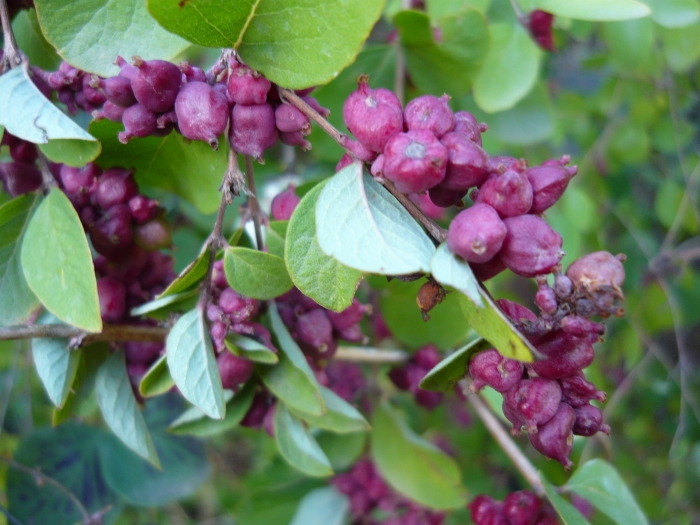Coralberry
(Symphoricarpos orbiculatus)
Coralberry (Symphoricarpos orbiculatus)
/
/

Cillas
CC BY-SA 4.0








































































Estimated Native Range
Summary
Coralberry is valued for its ability to form dense thickets, making it useful for erosion control and as a low-maintenance ground cover in shaded areas. It is also planted for wildlife habitat restoration and in naturalized areas. This shrub is adaptable to a range of soil conditions but prefers moist, well-drained soils. It can tolerate full sun to part shade, with part shade being ideal to prevent leaf scorch in hot climates. While generally pest and disease resistant, Coralberry can be susceptible to leaf spot and powdery mildew. It is also known for its suckering habit, which can be aggressive in some garden settings, requiring occasional management to keep it in bounds.CC BY-SA 4.0
Plant Description
- Plant Type: Shrub
- Height: 2-5 feet
- Width: 4-8 feet
- Growth Rate: Moderate
- Flower Color: Pink, White
- Flowering Season: Spring
- Leaf Retention: Deciduous
Growth Requirements
- Sun: Full Sun, Part Shade
- Water: Medium
- Drainage: Medium
Common Uses
Bank Stabilization, Bee Garden, Bird Garden, Butterfly Garden, Deer Resistant, Drought Tolerant, Erosion Control, Fire Resistant, Groundcover, Hummingbird Garden, Low Maintenance, Rabbit Resistant, Street Planting
Natural Habitat
Understory of forests, thickets, and woodland edges, as well as open prairies in the Eastern United States and Northeastern Mexico
Other Names
Common Names: Indian Currant , Buckbrush , Round Snowberry , Korallenbeere , Symphorine À Baies-De-Corail , Groseillier Des Indiens , Symphorine Orbiculaire , Symphorine À Baies De Corail , Symphorine À Feuilles Rondes , Koraalbes , Petersbuske
Scientific Names: Symphoricarpos orbiculatus , Symphoricarpos symphoricarpos , Symphoricarpos vulgaris , Symphoricarpos orbicularis , Lonicera symphoricarpos , Symphoricarpos orbiculatus f. variegatus , Symphoria glomerata , Symphoricarpos spicatus , Symphoricarpos orbiculatus f. leucocarpus , Symphoria conglomerata
GBIF Accepted Name: Symphoricarpos orbiculatus Moench